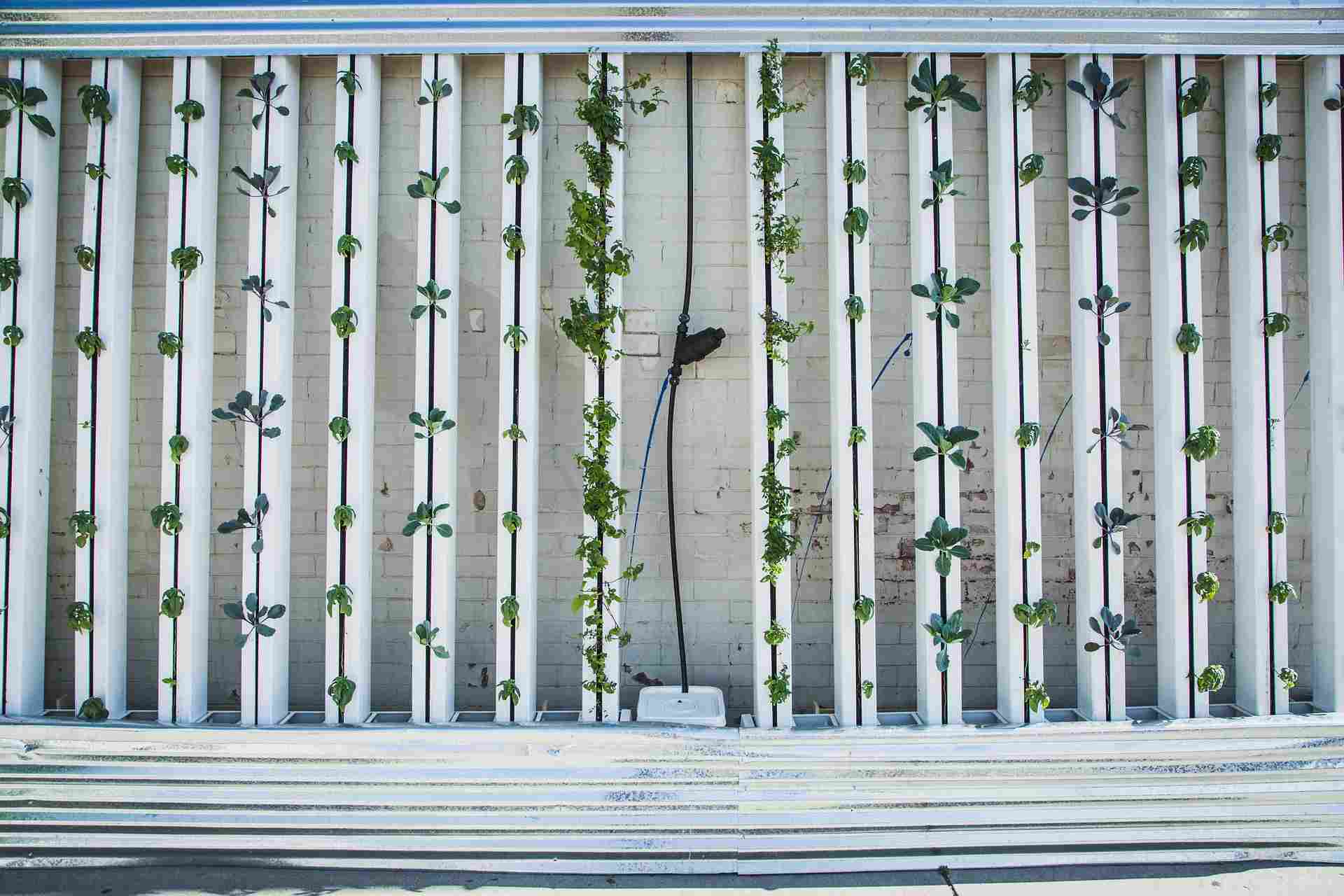One acre of vertical farming can produce the same as between 10-20 acres of conventional production, according to the Welsh government.
So with pressures on land for development and other uses, could vertical farming be how we grow food in the future?
‘Vertical farming’ has often been used in urban areas where there is lack of space and opportunity to farm the land: Food is grown in an indoor, controlled environment, also known as Controlled Environment Agriculture (CEA).
Hydroponics, Aquaponics and Aeroponics all fall into the category of CEA and none of them use any soil to grow the food.

Photo credit: Business Wales
Increased demand for food
If you follow professor John Beddington (UK Government Chief Scientific Adviser from 2008 until 2013), you will be familiar with his theory of a “Perfect Storm by 2030”.
Back in 2009, he explained; “our food reserves are at a 50-year low, but by 2030 we need to be producing 50% more food. At the same time, we will need 50% more energy, and 30% more fresh water.” The perfect storm outlines the need for addressing the shortage of food, water and energy simultaneously.
This leads me to wonder; will we be seeing more food grown in a CEA conditions in the future?
Pros and cons of vertical farming
Dubbed as the UK’s first ever vertical farm, the BBC reported the opening of the Intelligent Growth Solutions vertical farm last year, saying; “the idea is to create the most precise, time-efficient and waste-free method of growing.”
But what are the pros and cons of vertical farming?

Less chemical use?
Having been produced in a controlled system, the presence of pests, weeds and diseases are reduced. Does this ultimately lead to the reduction in chemical application in this environment?
More: See how farmers in the rice industry are steering away from using pesticides with the use of ducks
Lettuce and kale are amongst the most popular produce that can be grown under CEA. So, it has been suggested as a solution for vegetable production and not cereal production.
An advantage of vertical farming is there is no seasons and produce can be grown all year round. However, this in-turn requires a lot of energy for 24-hour lighting. So, I fear only modern renewable energy solutions are a viable option.
Jason Hawkins-Row, CEO, Aponic; said:
“My thoughts on this have always been that we should be looking at sustainable 365 food production in the UK, by sustainable, I mean that it is produced in an environmentally sustainable way.
“To make that work it has to be a sustainable business too. The Aponic system takes the variables out of farming that make the difference between a good year and a bad year and delivers clean, consistent, high quality produce with great flavour and provenance.
“This turns the market around so that sustainability doesn’t have to cost more or be more difficult or onerous and truly sustainable businesses can be grown with the side effect of using 90% less water, growing faster and delivering larger yields without negatively impacting the environment.
“As the production and harvesting is cheaper it means more margin in food production. That is a truly sustainable business model that is a genuine diversification tool for world farmers so that they can prosper within their core market and understanding.”
Chris Hewis, a farmer in Lincolnshire, said:
“With an ever increasing population, and loss of farmland to urbanisation and development, I think it’s inevitable that some crops will be grown in controlled environments in vertical farms.
“The first to benefit will be the salad and veg industries and it is important for both farmers and new entrants to the industry to collaborate”
The Food Triangle
The three key areas of influence on vertical farming, are the following:
- Consumption – with a growing population it is highly unlikely that food consumption is going to reduce. So our time is best spent focussing on productivity
- Increase yields – there have been notable milestones in the increase in yields over the past 20 years and this has plateaued recently. Digital agronomy is set to take this to the next level once again via variable rate fertiliser and chemical applications. There are solutions on the market that are helping farmers make better data driven decisions to support this
- Vertical farming – seems to me like this is an integral part of the solution

RW
Thumbnail Image by BrightAgrotech from Pixabay

